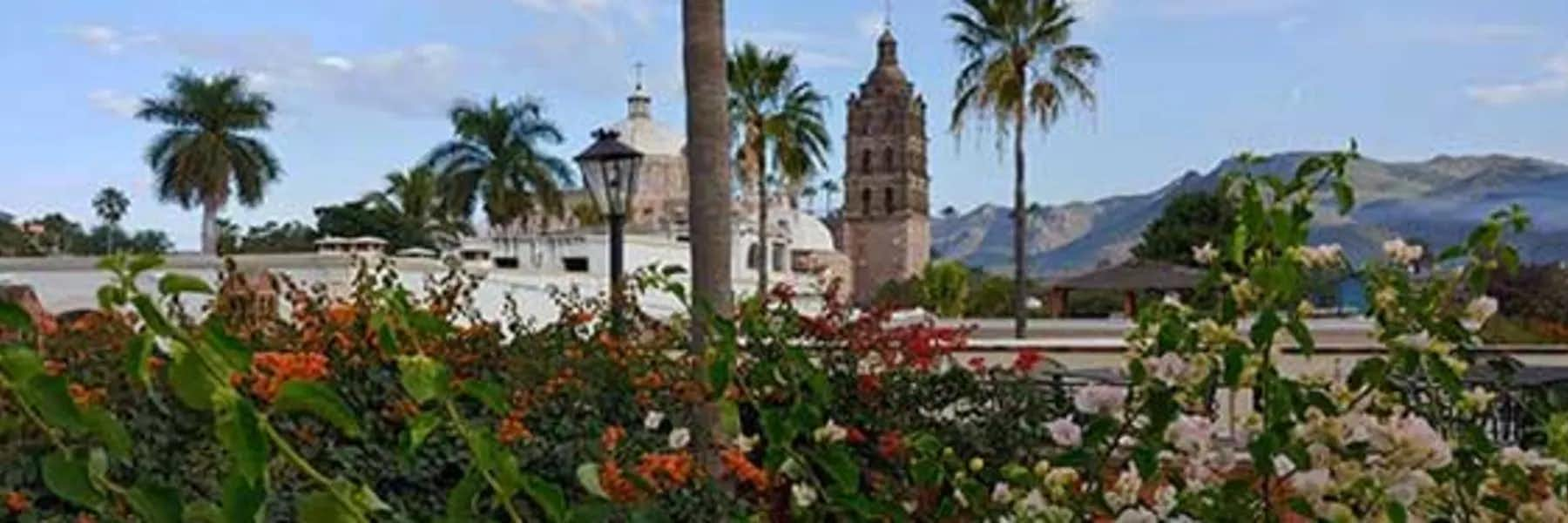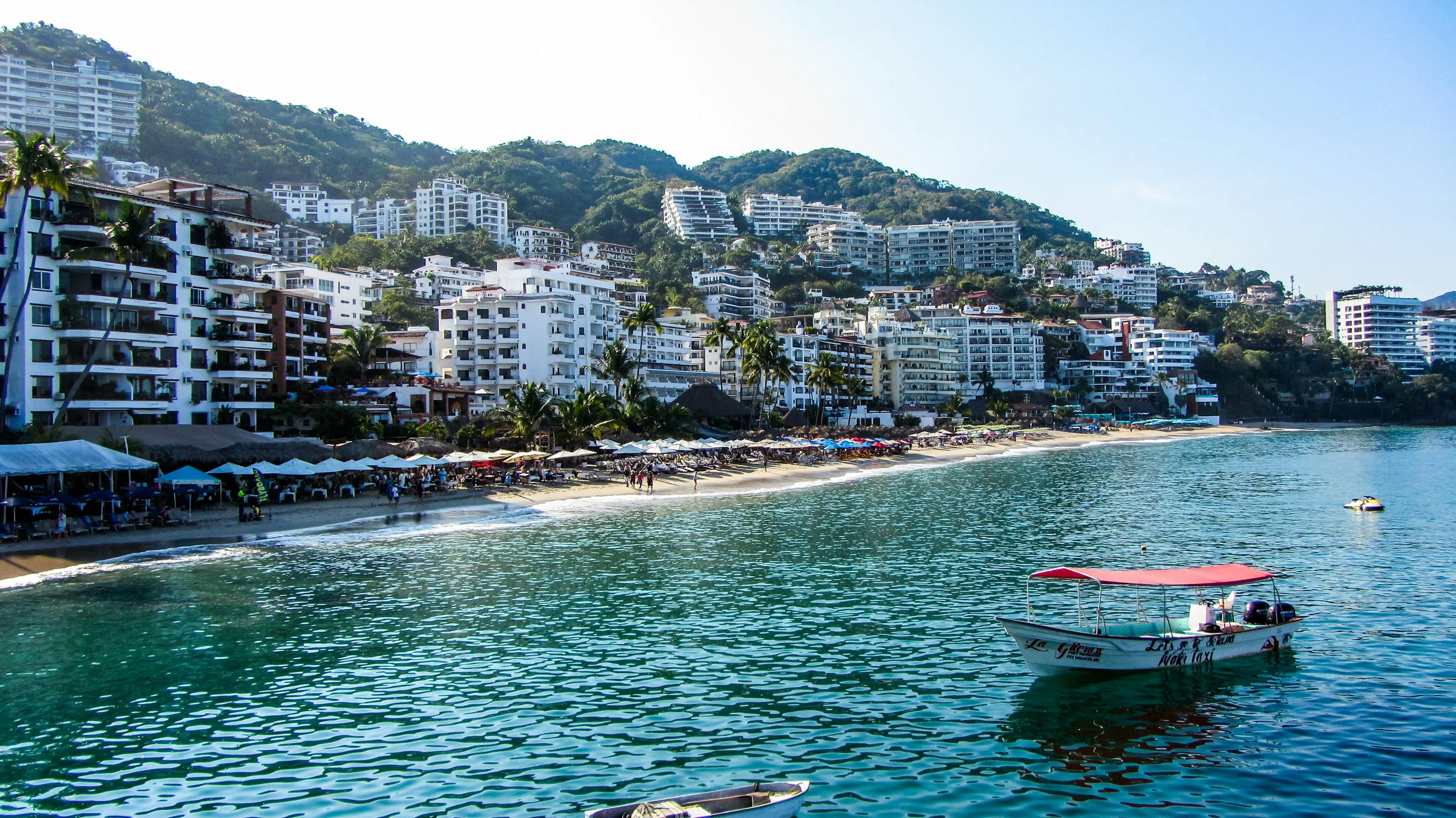By Mary McCarthy
Alamos, designated a “Pueblo Magico” in 2005 by the Mexican Secretariat of Tourism, is unique. The Secretariat of Tourism is right. As Jamie Alcantar, general manager of Hacienda de los Santos, a world-renowned resort hotel in Alamos, says, “It is a clean, quiet town and is special." The town sits in the foothills of the Sierra Madre Occidental at about 1,300 feet in elevation. The town has a long history of hosting famous residents and notable travelers. Maria Felix, a beloved movie star in Mexico, was born here. A museum dedicated to her in her old home is near the center of town. But several others from the town, Alfonso Ortiz Tirado (El Tenor de las Americas), physician and tenor, Arturo Marquez, composer, and several well-known Americans, Rip Torn and Carroll O'Conner, were also residents of the town. It has been a refuge and a cultural center for years. And, like many of the Pueblos Magicos, it does feel like stepping back in time.
But what enticed the Mexican government to designate Alamos as a Pueblo Magico? Certainly, its beauty, architecture, and history were a part of this. It is the only Pueblo Magico in Mexico this far north. The town has deep colonial roots. Church records of Alamos date to 1682, but the town was officially founded on December 8, 1685. Before the Spanish arrived with Francisco Vaquez de Coronado in 1540, exploring for silver (a massive vein of silver was discovered), the area was home to the Mayos, Yaquis, and Guarijios. The Guarijios people lived in the place where the current town of Alamos is located. These peoples were farmers and lived in less populated and complicated societies than the indigenous peoples further south. The land on which Alamos now stands has been populated for a very long time. The languages of the Mayo and Yaquis continue to be spoken in Sonora today.
The Iglesia Parroquia de Nuestra Senora de la Purisima Concepcion (the main town church) stands over the central square. On a lazy afternoon, people gather to relax, eat ice cream, and chat. On Saturday evenings, they gather to have fun. The understated, impressive, and original homes face the main streets as you walk through the town center. These homes are distinguished by portales (entranceways) and inner courtyards. The designs of both likely come from southern Spain and North Africa, climates where shade was valued. Many of these homes had fallen into disrepair until the middle of the last century when they were purchased and renovated. Now, these homes are glorious once again. Double-decker buses will take the traveler throughout the historic downtown and then out to the other areas of interest in the town. The town is developed on a modified grid system, popular with the Spanish. In Alamos, the grid system design is interrupted by two arroyos. However, it is an easy town to navigate.
Get Your Free Mexico Report Today!
Get Your Free Mexico Report Today!
Learn more about Mexico and other countries in our daily postcard e-letter. Simply enter your email address below and we’ll send you a free special report – Mexico: The Perfect Close-to-Home Retirement Haven.

By submitting your email address, you will receive a free subscription to IL Postcards and special offers from International Living and our affiliates. You can unsubscribe at any time, and we encourage you to read more about our Privacy Policy.
Retire in Alamos, Mexico

It is a safe town, and many of the expats who have made this their home prefer the quiet and the culture. The most startling thing you might see is a horse wandering the cobblestone streets. There is a local clinic available for triage and minor medical problems. In Navojoa, thirty minutes away, the Clinical Hospital of San Jose is equipped to address more serious issues. My friend, who is in her eighties, is quite comfortable with the medical services available and her doctor. Of course, the cost of medical care is much less than the States, and the doctors in Mexico routinely see their patients for an hour, and they will do house calls.
As to shopping, Sam’s Club and Home Depot are available nearby if you crave either. There are large stores for groceries and other sundries in Navojoa. The Alameda has numerous small stores specializing in vegetables, fruits, and meats. For a shopping adventure, visit the Tiangas on a Sunday morning and shop directly from the person who grows the food. Much of the food produced in Mexico is grown without pesticides, which makes it healthier. Many people who have had allergies in the U.S. find that they can eat the same foods in Mexico without problems. And many will tell you about having their blood pressure go down. Whether it is the food or the calm is up for debate, but you will hear people talk about this.
Lifestyle in Alamos, Mexico
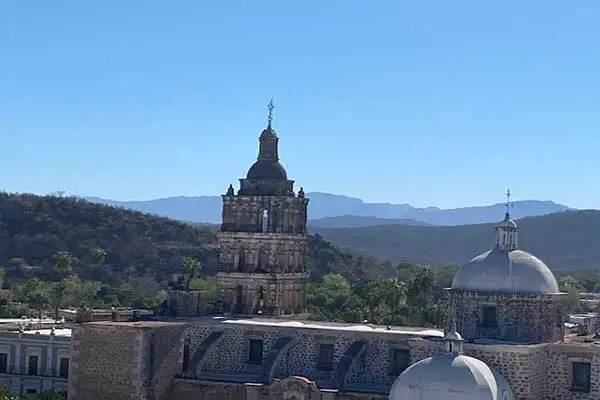
The weather in Alamos is near perfect. Like many colonial towns in central Mexico, a combination of latitude and elevation create warm, dry winters and summers with showers to freshen the air after a hot day. The town sits in a valley that is an unusual ecological zone. Alamos is in a transition zone from the Sonoran Desert and the tropical deciduous forest. Due to this, a mix of deciduous trees, such as amapa and kapok with flowering vines, and Cardon cactus creates an unusual habitat for birds and mammals—coatimundi and ocelots roam the hills.
When I talked with people about what they love about Alamos, they spoke of the tranquility, the physical beauty, the history, and the architecture, but most especially the people. It is like stepping back in time to a less hectic time. Visitors may come for the beauty and history, but they stay for the people. There is an easy-going charm for both the Mexicans and the expats. As a friend stated, the two communities get along well. People retire here from many different places.
Cost of Living in Alamos, Mexico
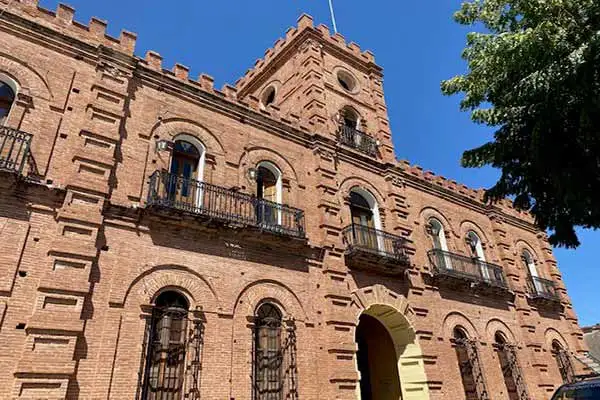
As to the cost of living, Mexico is cheaper than the U.S. and Canada. Therefore, buying a pleasant small home for under $100,000 is very possible. This would be a livable home that needs no major repair, bearing in mind that if you did need to renovate something, the cost of labor is far less than in the U.S. If you want something grander, it is also available. There are two realty companies in town, and both are friendly and act with integrity. The cost of electricity, water, and internet is also cheaper, about 30% more affordable than in the States. Much to my surprise, I realized that the garbage is picked up six days a week, which explains why it is hard to find a piece of paper on the streets. As to public transport, there is cab service, and the town is small so walking around the pueblo is easy, just be aware that it is important to look down as cobblestones are uneven.
Things to Do in Alamos, Mexico
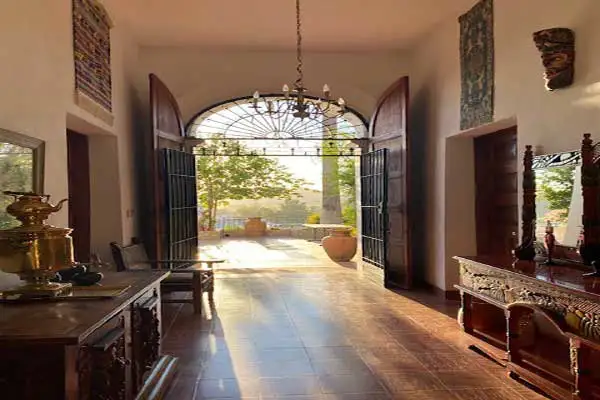
Fine dining is available: Charisma Restaurante, Teresita’s Panaderia y Bistro, La Casa Argentina, Restaurante La Palmeras, and many more. The local restaurants specialize in everything from steak (La Casa Argentina) to breakfast and lunch at Teresita's. Of course, if you would rather sit on the plaza and drink Aguas Frescas, refreshing fruit drinks, and watch the locals, this is also a great idea. But if you want an elegant meal, there is a lot available.
At this time, it is vital to mention Hacienda de los Santos, a world-class destination for weddings and events. The owners just built a chapel on the grounds, which is stunning. The hotel, a restored 17th-century hacienda, was purchased by Jim and Nancy Swickard. Over the years since, additional properties surrounding it have been added to the original hacienda. Walking in through the gated entrance, the interior opens to a dazzling view of another world. The hotel has a restaurant, theater, spa, and cantina. There are even cooking classes featuring international cuisine. Hacienda de los Santos is a world of its own. Jamie (the resort manager) disclosed with pride that Los Santos was recently voted number three of resort hotels in Mexico. This is quite an achievement. Viewing the peaceful, lush grounds on a summer's day, the beauty of the rooms, and the architecture so emblematic of Alamos, it is not difficult to understand why Los Santos was voted one of the best hotels in the country. It is elegant and visually stunning with its art, antiques, and lush green spaces.
For an outdoor person, there is much to do. There are varieties of birds enough to delight the most ardent birder. There is a hotel (El Pedregal) on the outskirts of Alamos and near the Parque La Colorada with extensive hiking and biking trails. The Solipasa Birding Tours company will take visitors to see the surrounding landscapes, birds, and animals. And if you really love steps, hiking to the top of El Mirador is an adventure. El Mirado overlooks the town from the top of El Perico hill.
What I have not mentioned are the festivals. Not just parties but the music festival in January of each year, Festival Alfonso Ortiz Tirado. In FAOT, many different types of music are featured, there is music for all. The festival draws huge crowds to this small town of 20,000, and in recent years the town fathers put some restrictions on drinking in the plaza to quieten things down. With up to 10,000 people arriving for the festival, you can imagine the excitement and energy that flows through the town. There are many fiestas and festivals in addition to FAOT. For example, the Alamos Alliance is a yearly summit of economic policymakers referred to as "The Little Mexican Davos." In addition to these events, there are the traditional festivals and celebrations, Dia de Muertos and Semana Santa (Easter Week). Both of these celebrations are very important in Mexico and are great fun to attend. My favorite is Día de Muerto, with pan de muerto (sweet bread) and the little candy skulls. If you are confused about what this is all about, I encourage you to see the movie "Coco." It is a lovely story.
Featured Image Copyright: ©AndreaCopp/iStock
Get Your Free Mexico Report Today!
Get Your Free Mexico Report Today!
Learn more about Mexico and other countries in our daily postcard e-letter. Simply enter your email address below and we’ll send you a free special report – Mexico: The Perfect Close-to-Home Retirement Haven.

By submitting your email address, you will receive a free subscription to IL Postcards and special offers from International Living and our affiliates. You can unsubscribe at any time, and we encourage you to read more about our Privacy Policy.
